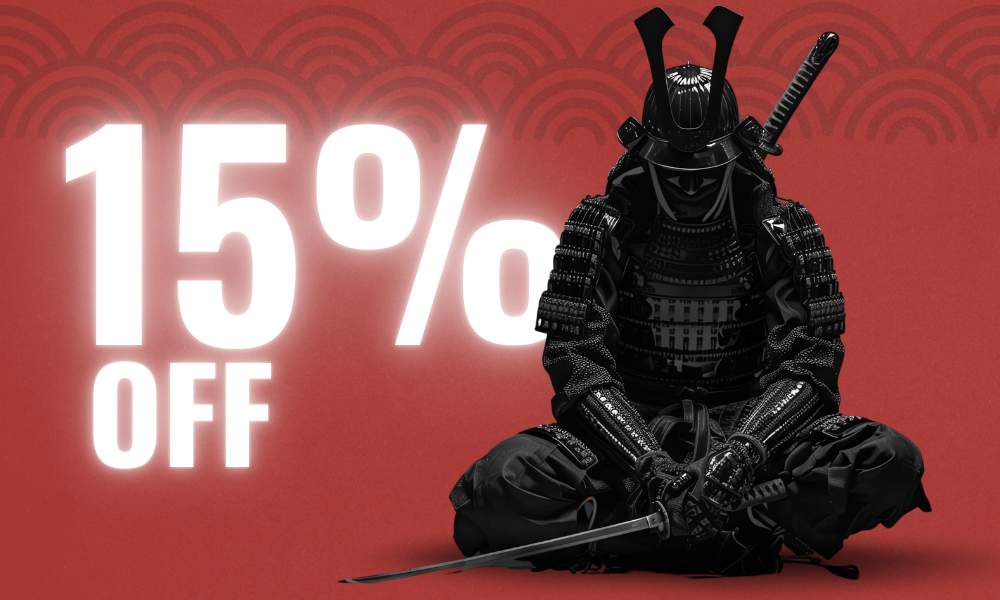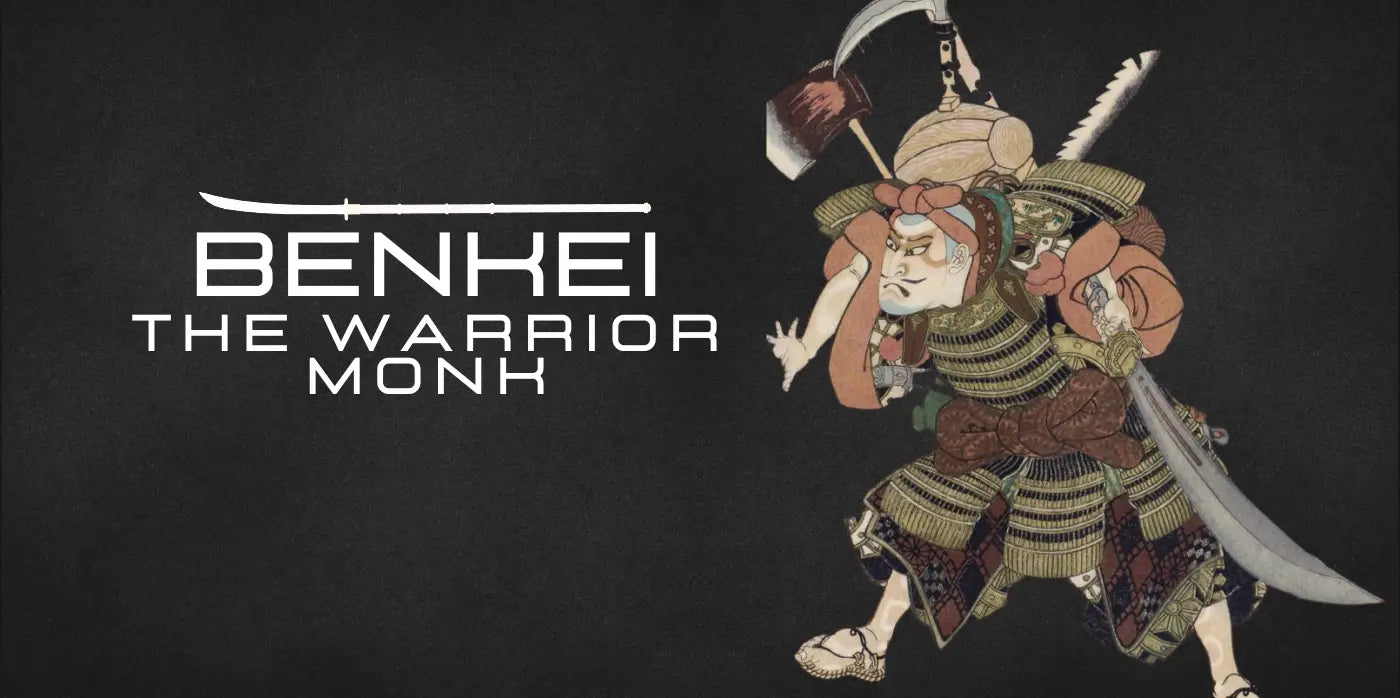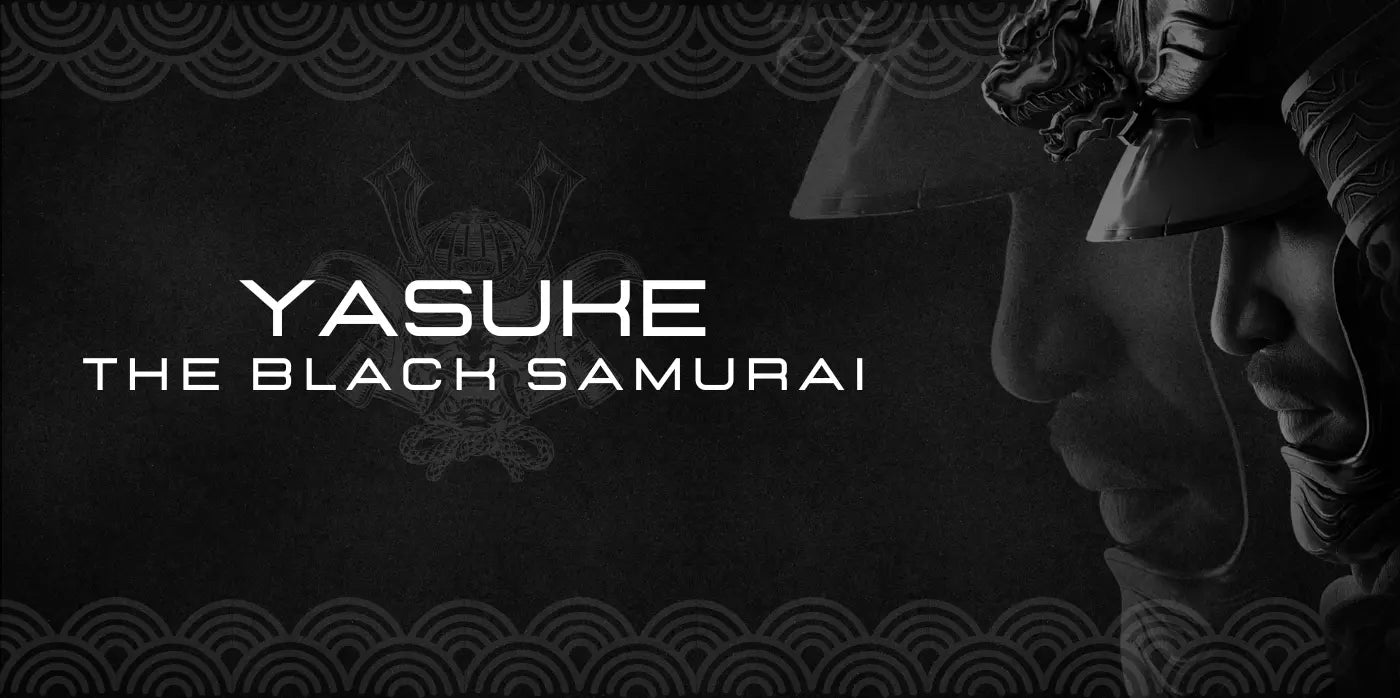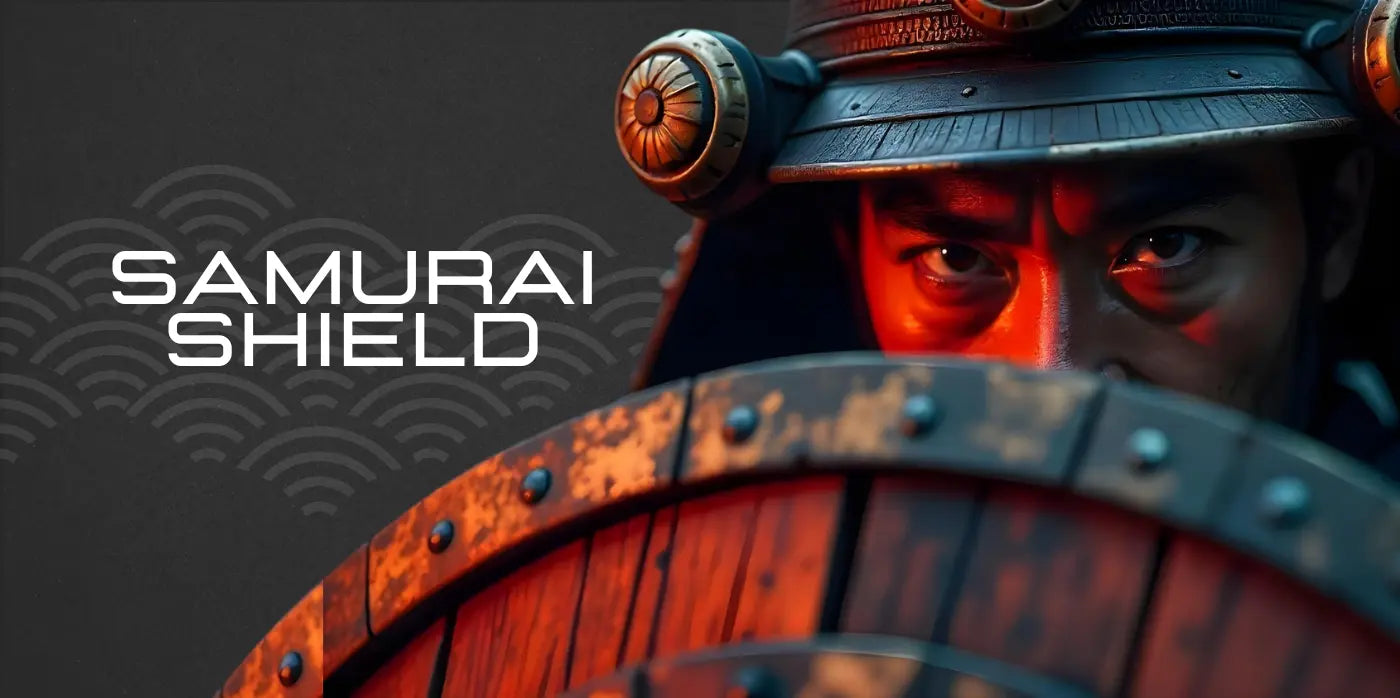Who is Saitō Musashibō Benkei
Saitō Musashibō Benkei (西塔武蔵坊弁慶) 1155–1189, was a famous warrior monk, or sōhei, from Japan's late Heian period, known for his incredible strength, loyalty, and his role as a retainer to the legendary samurai Minamoto no Yoshitsune. Benkei’s story is a mixture of historical fact and folklore, making him one of the most well-known figures in Japanese history and literature.

Saitō Musashibō Benkei
Saitō Musashibō Benkei Story
Early Life of Saitō Musashibō Benkei
Saitō Musashibō Benkei, born in 1155, is said to have been the child of a Buddhist temple priest. Benkei's birth is surrounded by mythical stories. Some suggest he was born in Tanabe, a town in Kii Province, and that his birth was a spectacular affair.
According to legend, Benkei’s mother carried him for 18 months—twice the duration of a normal pregnancy—before he was born as a massive child with a full head of hair and teeth.
Benkei's father, believed to be a holy man named Kumano Beto Tanzo, was horrified by his son’s appearance and attacked him, believing the child to be a demon or ogre.
From an early age, Benkei stood out for his exceptional size and extraordinary strength. As a child, he was known for being large and physically powerful, with a wild and unruly nature. This behavior eventually led him to enter the life of a Buddhist monk in various temples.
Benkei as a Monk
In an attempt to calm his wild and rebellious nature, Benkei was sent to Mount Hiei to join the religious life as a Tendai Buddhist monk at the famed Enryaku-ji Temple. Although he took to the religious lifestyle, Benkei's wild behavior eventually led to his expulsion from the temple. Unfazed, Benkei set out into the world, continuing his religious journey while adopting the name Saitō Musashibō Benkei, a name that reflected his lineage and upbringing.
As he traveled, Benkei likely became a yamabushi, a wandering holy man who traversed the mountains, leading an austere lifestyle to achieve enlightenment. Despite his attempts to fulfill his role as a holy man, Benkei often engaged in chaotic actions, once even causing a temple to burn down.

Statue of Benkei
As time passed, Benkei became increasingly disillusioned with monastic life. His rebellious spirit and dissatisfaction with the constraints of the temple drove him to leave behind the religious path. He became a rōnin monk or sōhei (warrior monk), wandering across Japan and eventually turning to a life of combat and adventure.
His physical prowess and deep sense of warrior spirit pushed him to challenge samurai, marking the beginning of his legendary quest to collect 1,000 swords from defeated warriors.
Collecting 1,000 Swords: Benkei's Ambitious Quest
By the time Benkei returned to Kyoto, he had grown into a monstrous man, donning traditional religious garb but carrying an arsenal of weapons on his back. In addition to his naginata, Benkei wielded a tetsubō, an axe, and a bizarre assortment of tools such as a mallet, sickle, rake, and saw.
One of the most famous legends about Saitō Musashibō Benkei is his quest to defeat 1,000 arrogant or unworthy samurai in combat and take their swords as trophies. Setting his goal to gather 1,000 swords, a symbol of his strength and dominance over the warrior class. Benkei’s legend grew as he bested hundreds of samurai, earning a reputation as an undefeated warrior and the fearsome warrior monk.
By the time he reached Kyoto, Benkei had already collected 999 swords. His fearsome reputation had spread far and wide, and samurai would avoid confronting him.
However, the 1,000th sword would forever elude him, as his final opponent was no ordinary samurai. This young and agile figure countered every one of Benkei’s moves, and after a fierce battle—believed to have taken place at the Gojo Ohashi Bridge—Benkei was finally defeated.

Benkei Vs Yoshitsune on Gojo Bridge
The man who bested Benkei was Minamoto no Yoshitsune, the son of the renowned Lord Yoshitomo. Though Benkei attempted to exact revenge in a second battle, he was once again defeated. This second defeat marked the end of Benkei's quest for 1,000 swords but also the beginning of his loyalty to Yoshitsune.
Recognizing Yoshitsune as a warrior worthy of his loyalty, Benkei pledged himself to his former adversary. Together, the two would form a legendary partnership, fighting side by side until the very end.
The Unbreakable Bond Between Benkei and Yoshitsune
After his defeat at the hands of Minamoto no Yoshitsune on Gojō Bridge, Saitō Musashibō Benkei demonstrated one of his most defining traits: unwavering loyalty. Rather than harbor resentment, Benkei was deeply impressed by Yoshitsune’s superior skill and samurai spirit. Following this fateful encounter, Benkei swore to serve Yoshitsune faithfully, becoming his most trusted retainer.

Benkei and Yoshitsune
Benkei’s loyalty to Yoshitsune was absolute. He accompanied his master through numerous battles during the Genpei War which began in 1180, a conflict that saw the rise of the Minamoto clan and the fall of the rival Taira clan.
As Yoshitsune’s trusted right-hand man, Benkei played a critical role in their many victories. Together, they crushed Minamoto no Yoshinaka at Awazu and won key battles such as Ichinotani and Dan-no-ura, where they annihilated the Taira clan. Benkei’s combination of strength and loyalty perfectly complemented Yoshitsune’s tactical brilliance, creating an unstoppable force on the battlefield.

Genpei war
Benkei's Role in the Downfall of Yoshitsune
Despite their victories, Yoshitsune’s success became his downfall. His brother, Minamoto no Yoritomo, who had risen to become Shogun, began to suspect Yoshitsune of treason. Whether or not Yoshitsune actually harbored plans to overthrow Yoritomo remains unclear, but by 1189, Yoshitsune was stripped of his lands, branded an outlaw, and forced to flee.
Benkei, ever-loyal, remained by Yoshitsune’s side as they attempted to evade capture. One of the most famous stories from this period involves Benkei’s clever deception at a border checkpoint, where he disguised Yoshitsune and his men as monks. To convince the guards of their ruse, Benkei even went so far as to strike Yoshitsune with a stick, knowing that no loyal retainer would ever dare touch his lord in such a way. The guards, impressed by Benkei's show of loyalty, allowed them to pass.
Benkei’s Heroic Final Stand
The story of Saitō Musashibō Benkei's death is one of the most legendary tales in Japanese history, often referred to as the "Standing Death of Benkei." After years of loyal service to Minamoto no Yoshitsune, Benkei followed his master into exile as they were hunted by Yoshitsune's half-brother, Minamoto no Yoritomo. Cornered in the mountains at Koromogawa, Yoshitsune prepared for his final moments, with Benkei at his side, ready to defend him to the end during the battle of Koromo River.
As Yoritomo's forces approached, Benkei made a final stand on a small bridge, determined to protect Yoshitsune at all costs. Despite being vastly outnumbered, Benkei fought with extraordinary strength and fierceness, holding off waves of enemy soldiers. His reputation as an unstoppable warrior struck fear into the hearts of his enemies, who hesitated to approach him directly. According to legend, as the battle raged on, Benkei was struck by countless arrows, yet he continued to stand, holding his position with unshakable resolve.
It was only when the soldiers finally mustered the courage to approach that they realized Benkei had died while standing upright, still gripping his weapon in defiance. His body, pierced with arrows, remained in a standing position, guarding the bridge even in death. This iconic moment became known as the "Standing Death of Benkei," symbolizing his ultimate loyalty and indomitable spirit. Benkei’s defiance gave Yoshitsune the time he needed to commit seppuku, a ritual suicide, to preserve his honor.

Representation of Benkei's last santding
The "Standing Death of Benkei" has since become a powerful symbol of unwavering loyalty, honor, and the willingness to sacrifice everything for one's master. Benkei’s death, just like his life, represents the epitome of the samurai code of bushidō, making him one of the most revered and legendary figures in Japanese culture.
While his deeds are celebrated as feats of great strength and courage, it is unclear whether Benkei actually existed. If he did, the stories of his incredible accomplishments, passed down over the centuries, have likely been embellished. Regardless, the legend of Benkei continues to inspire countless samurai and admirers of his supposed strength and unwavering loyalty.

Standing death of Benkei





